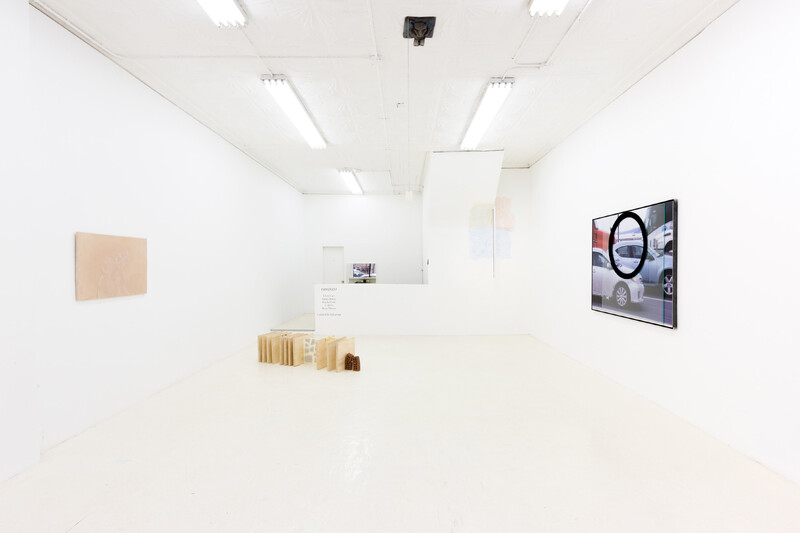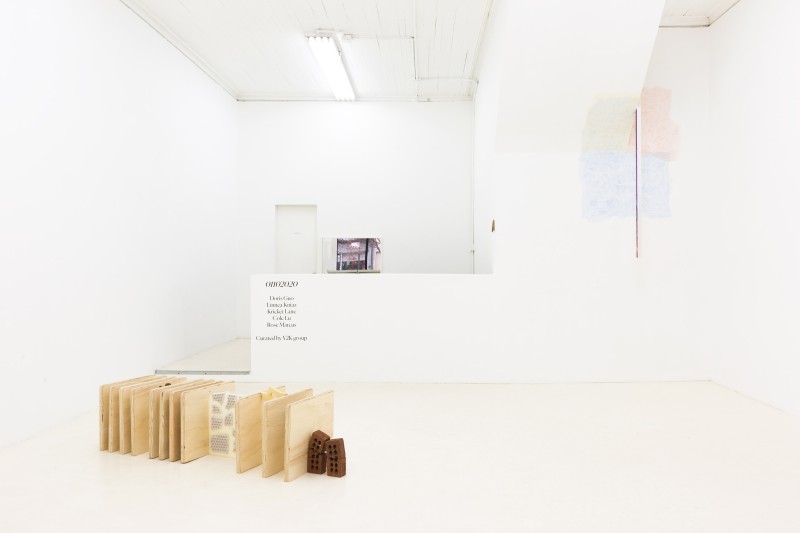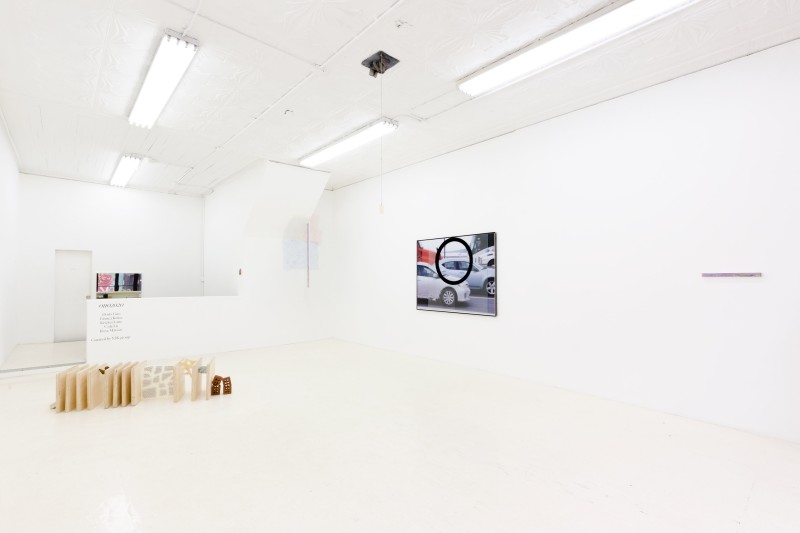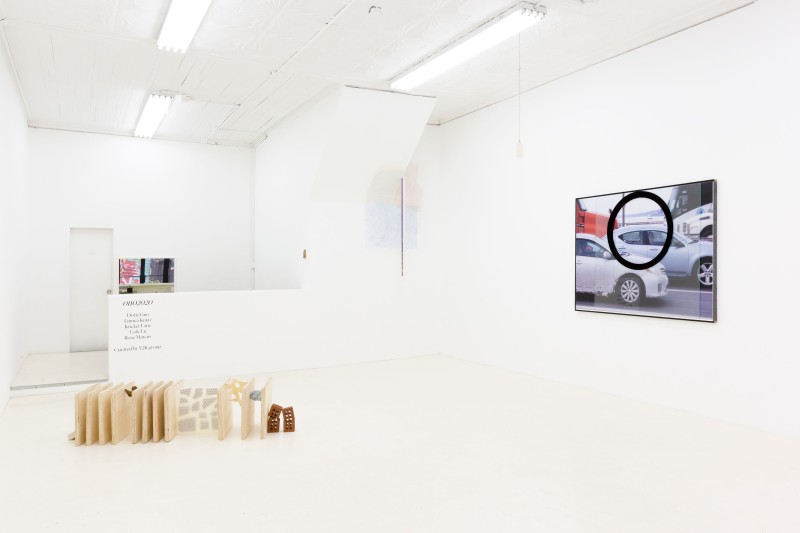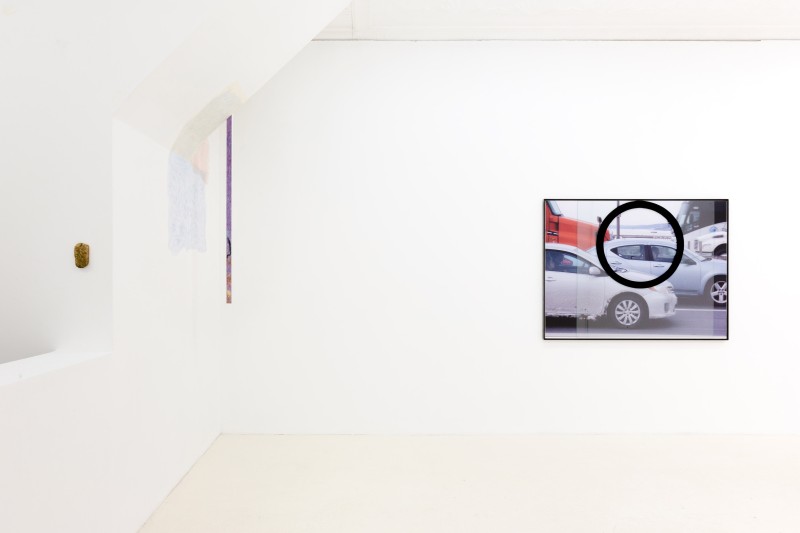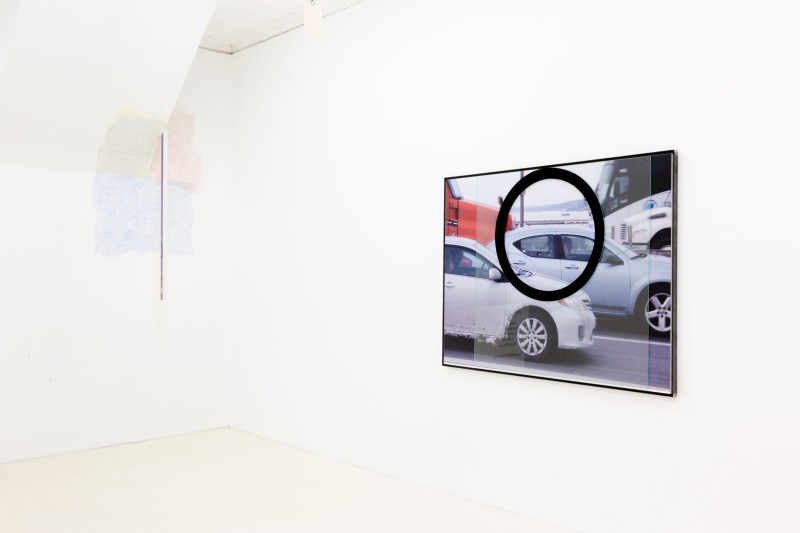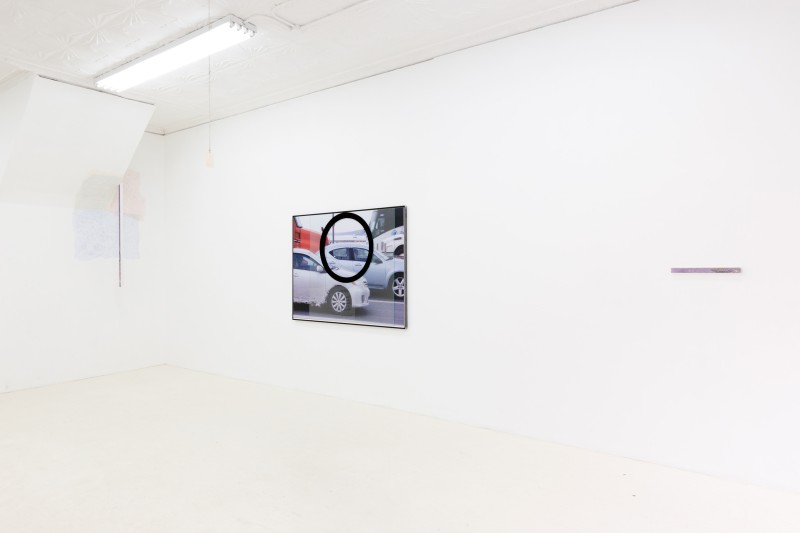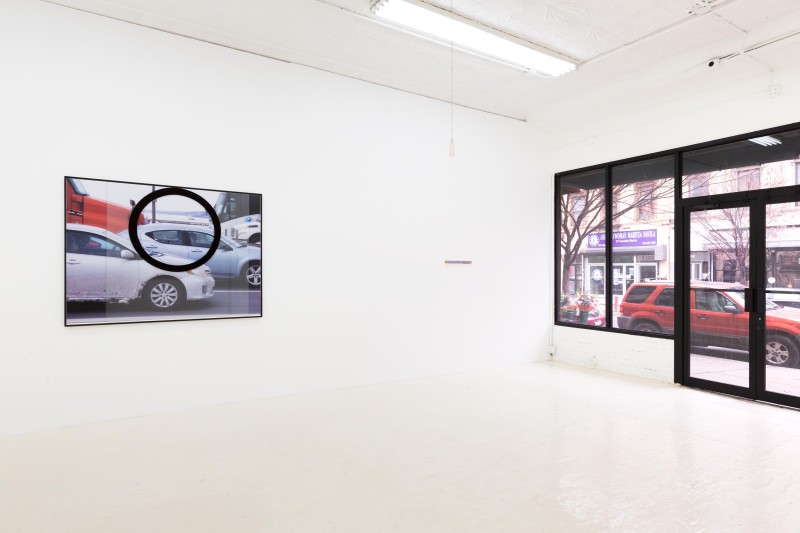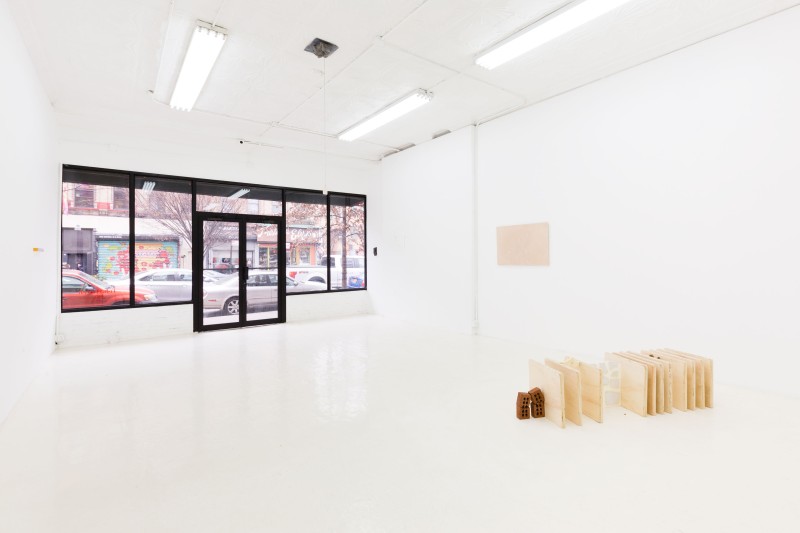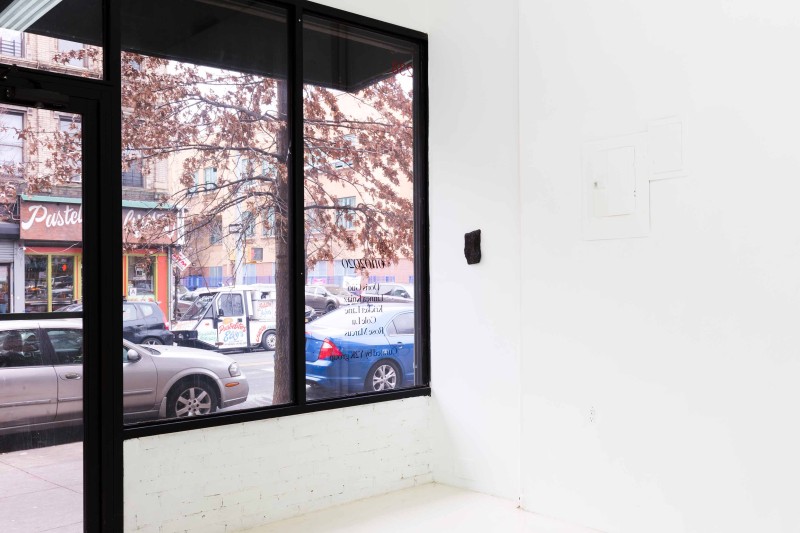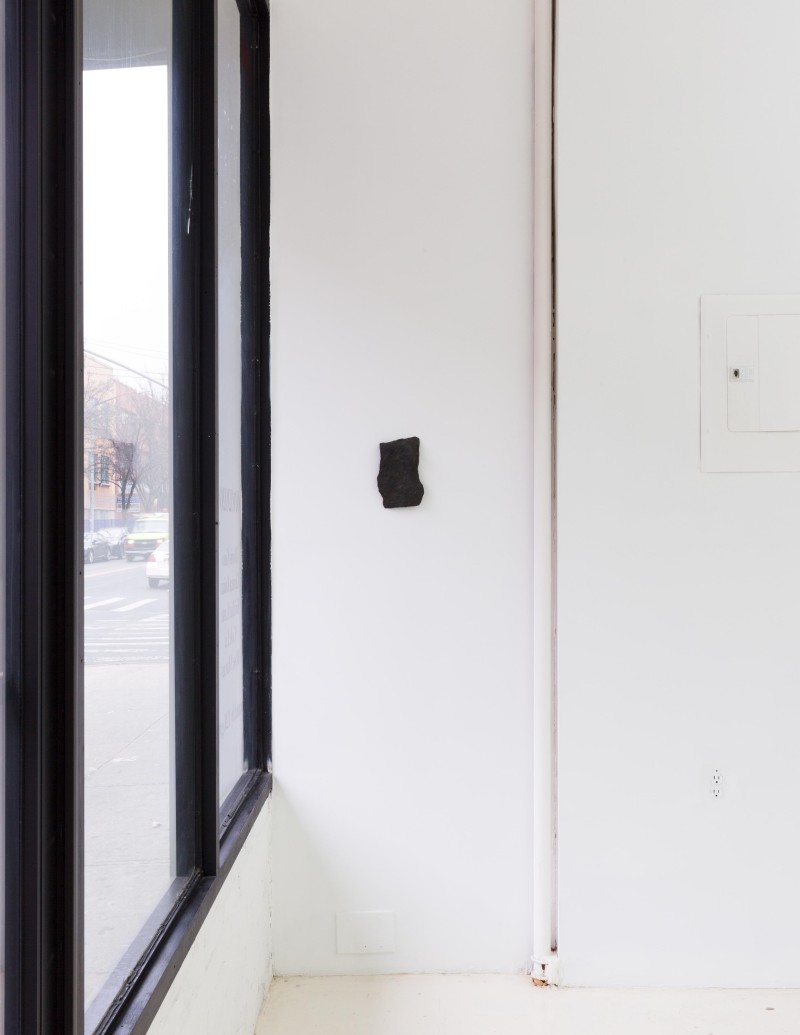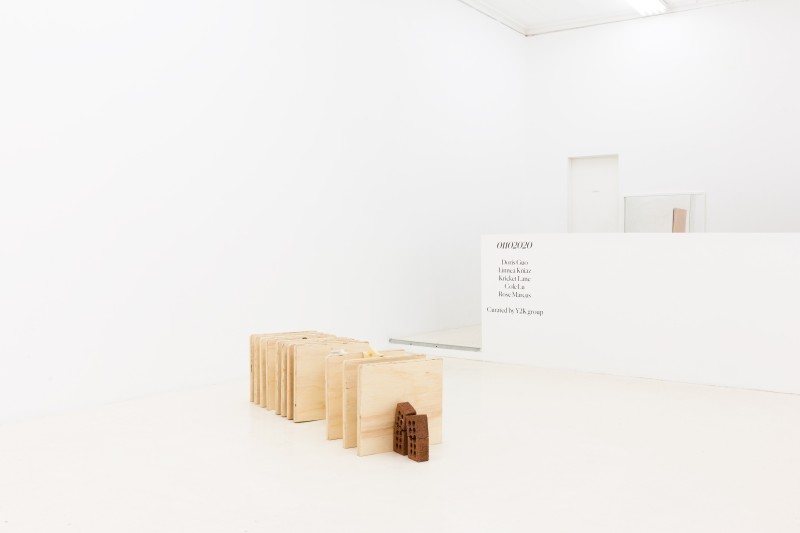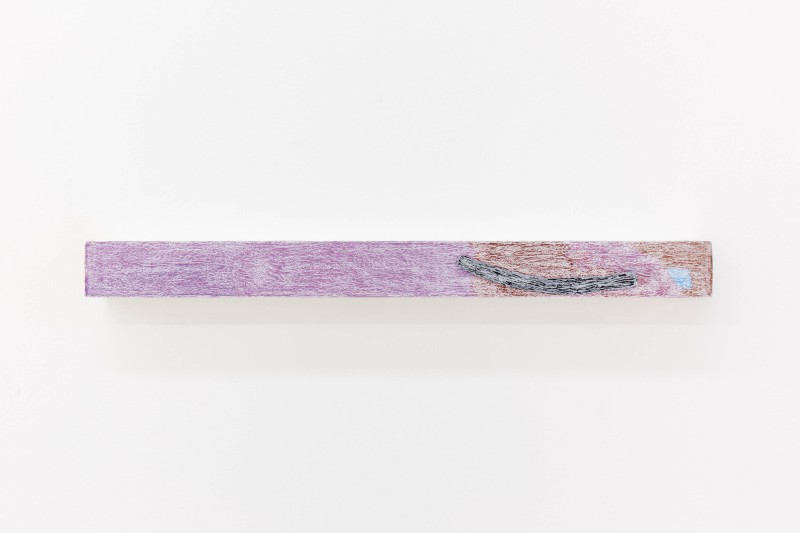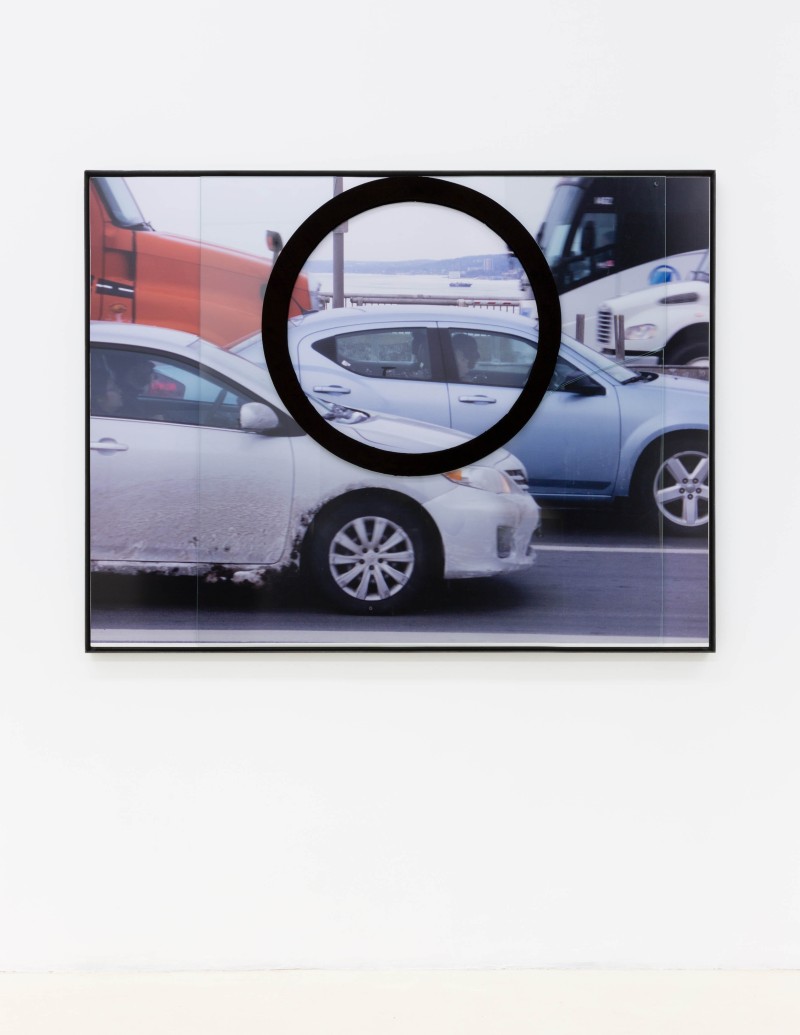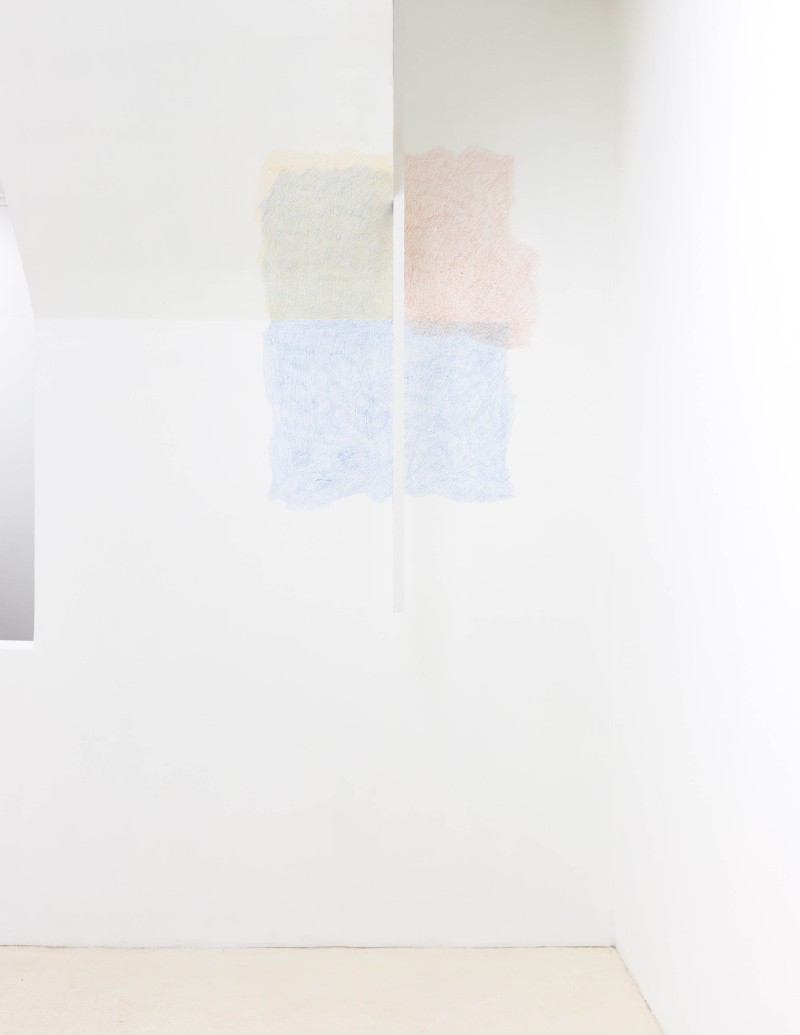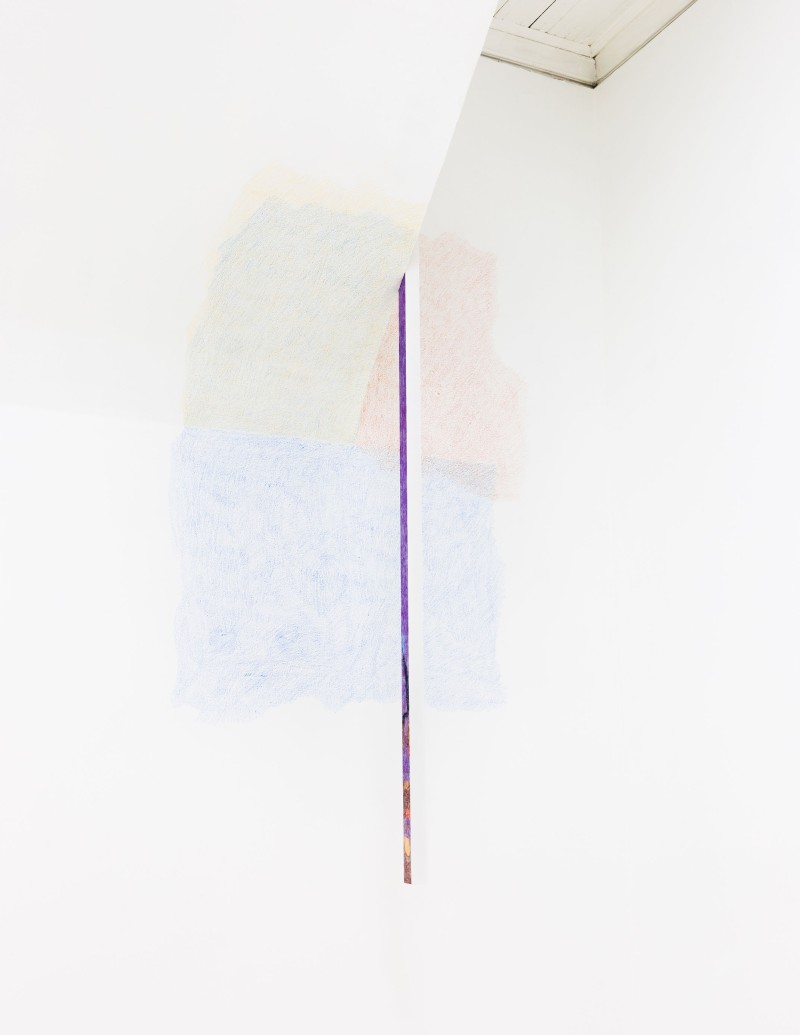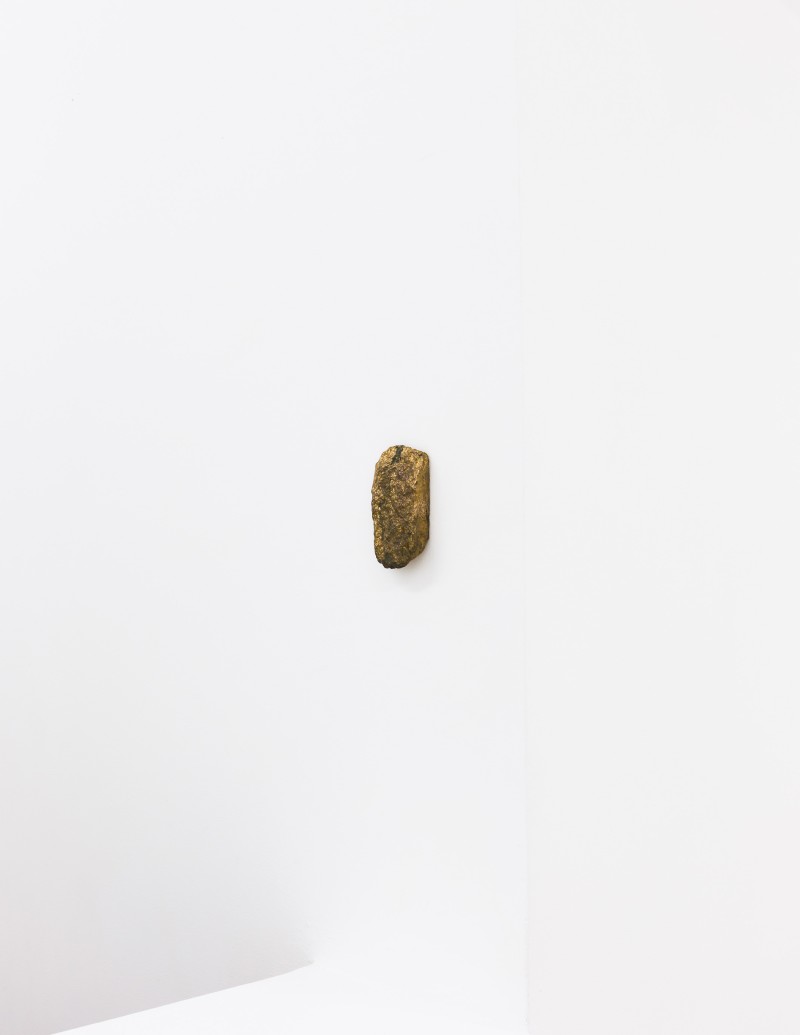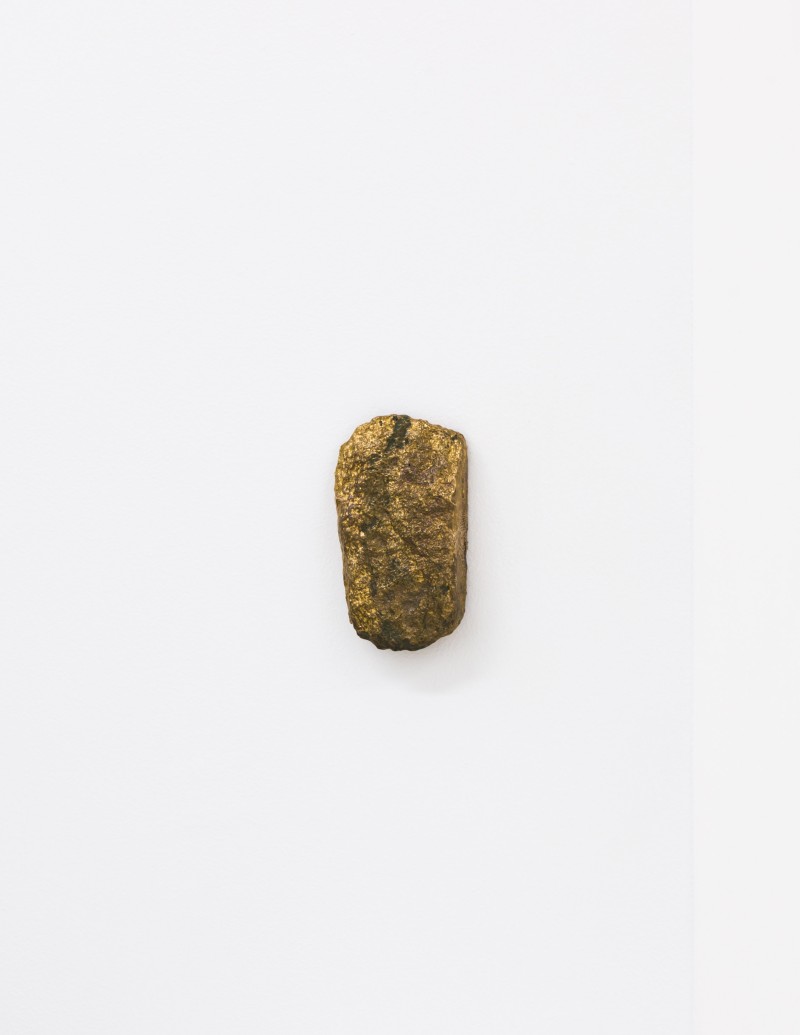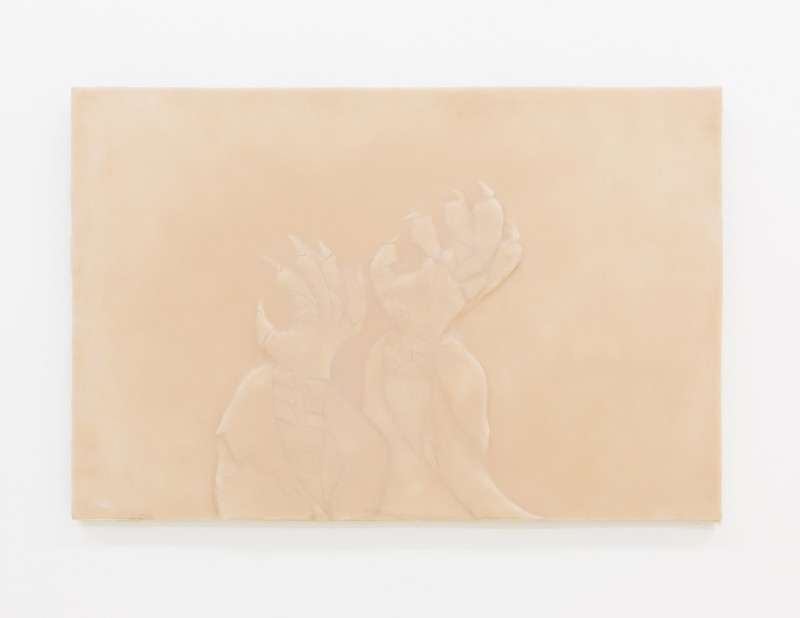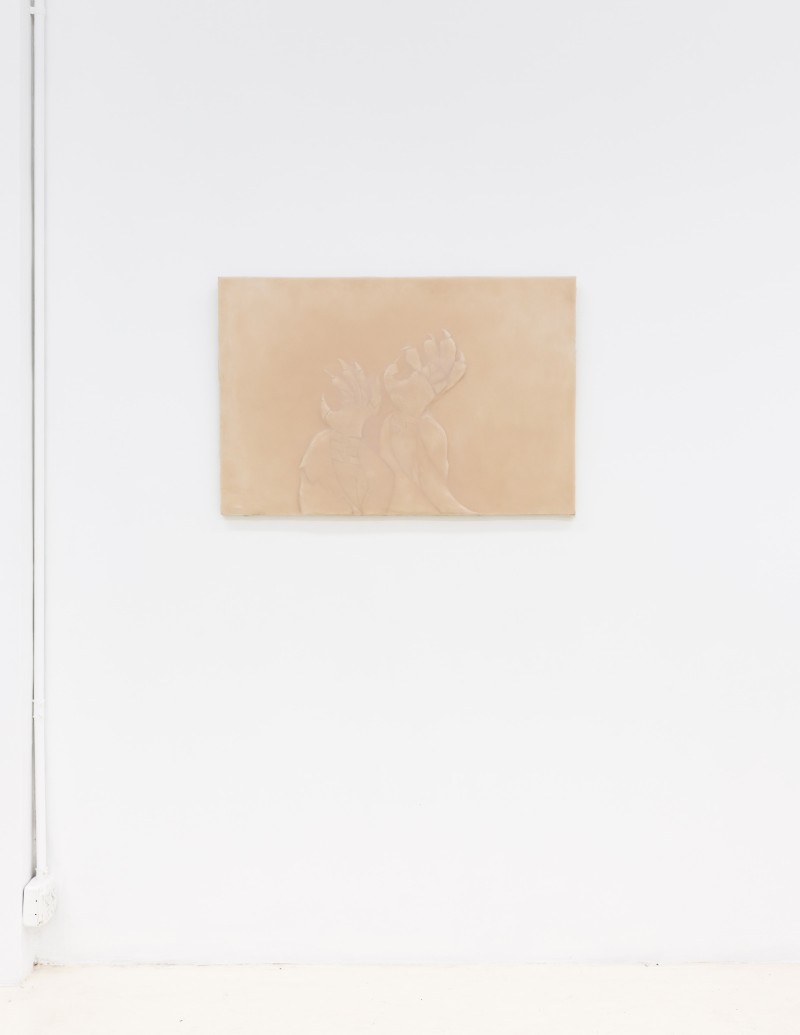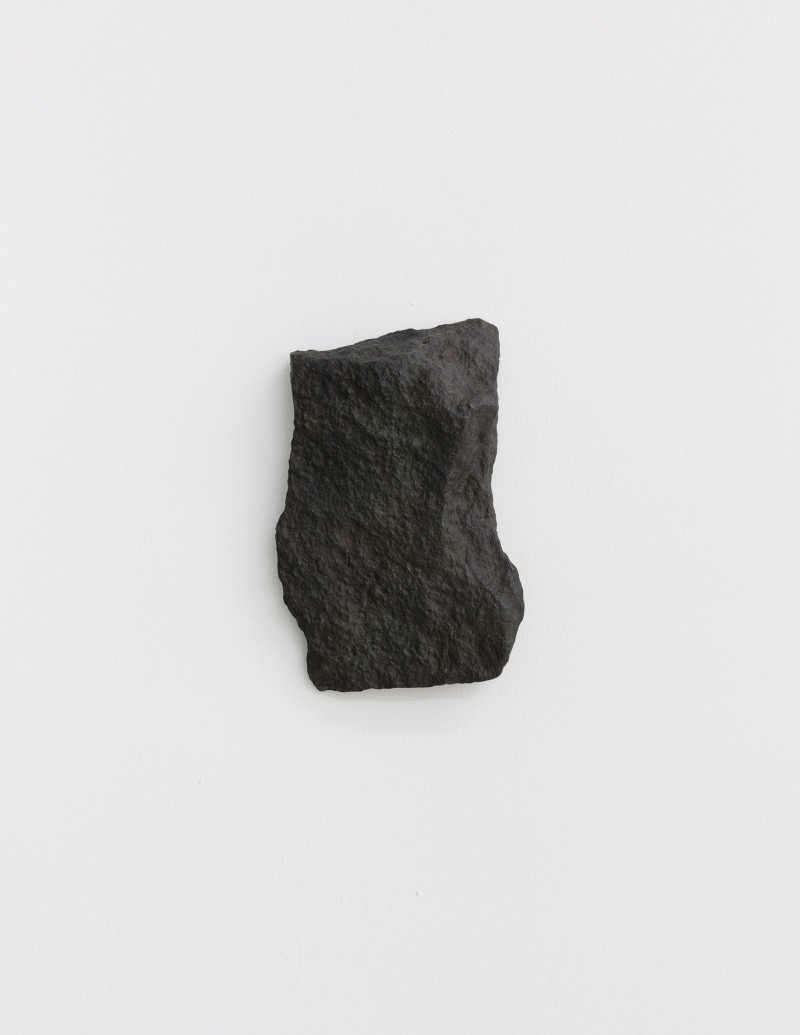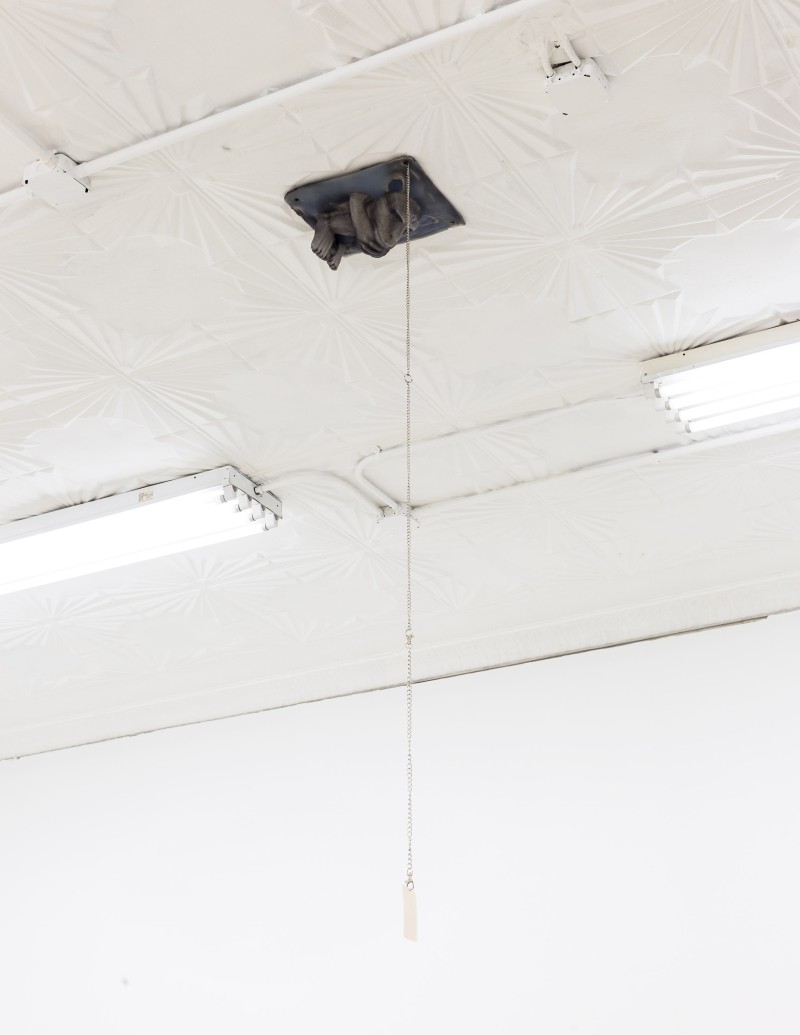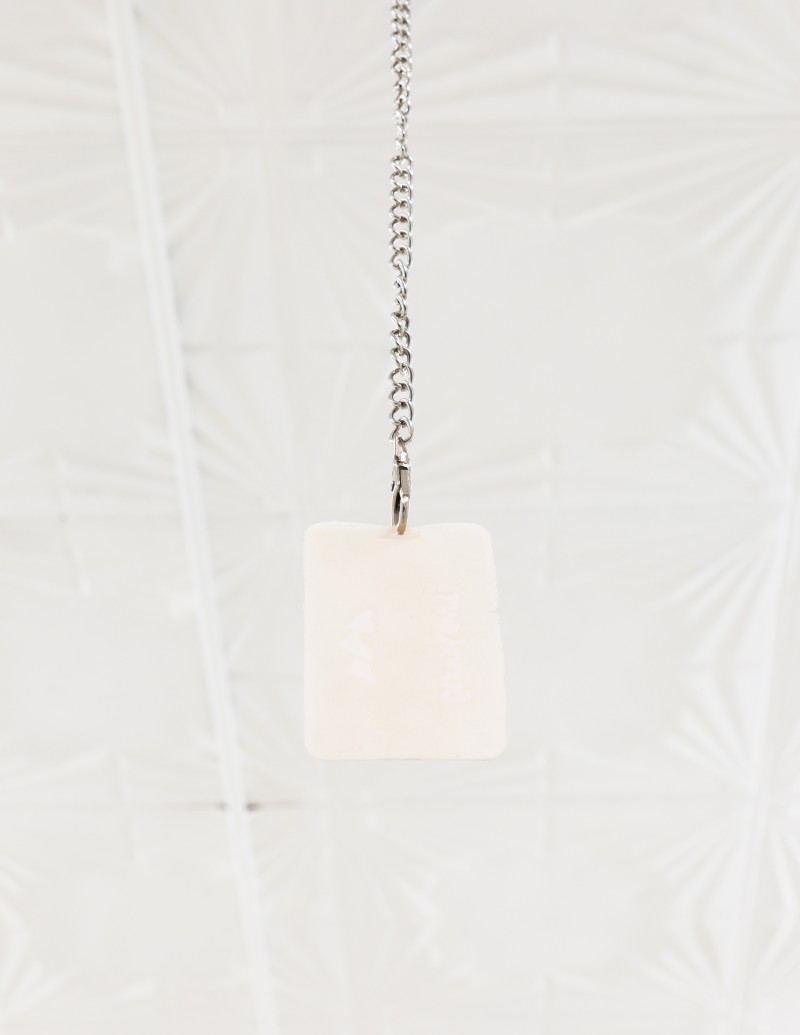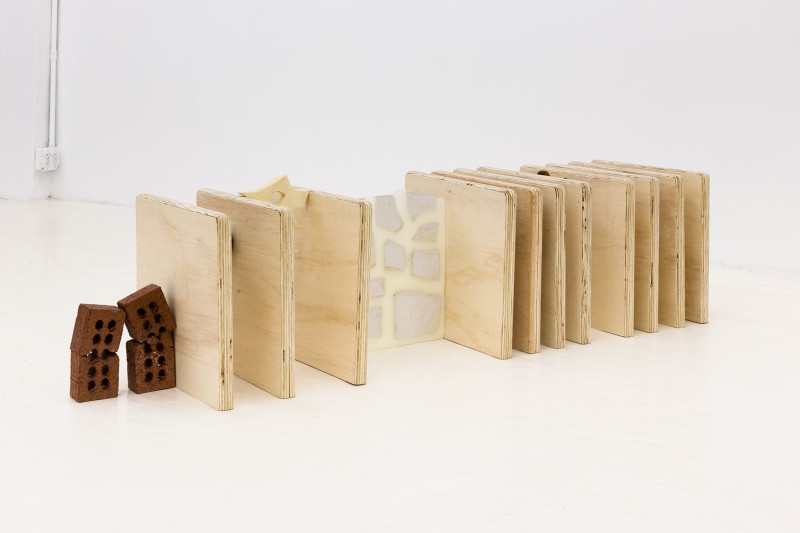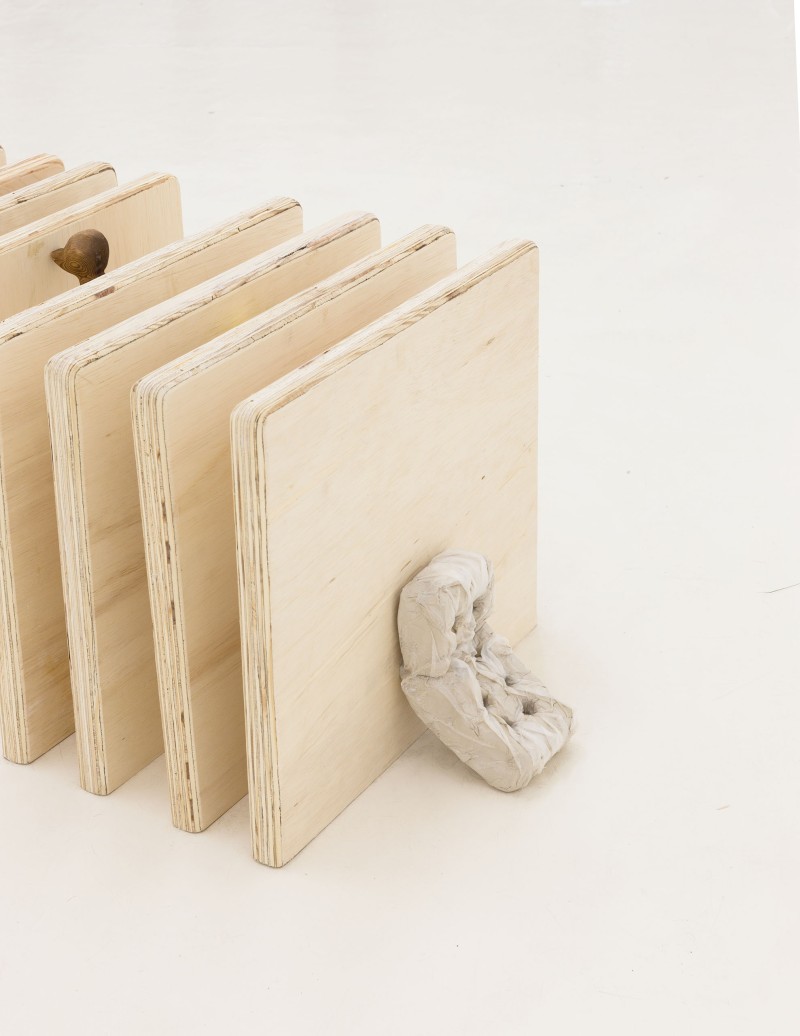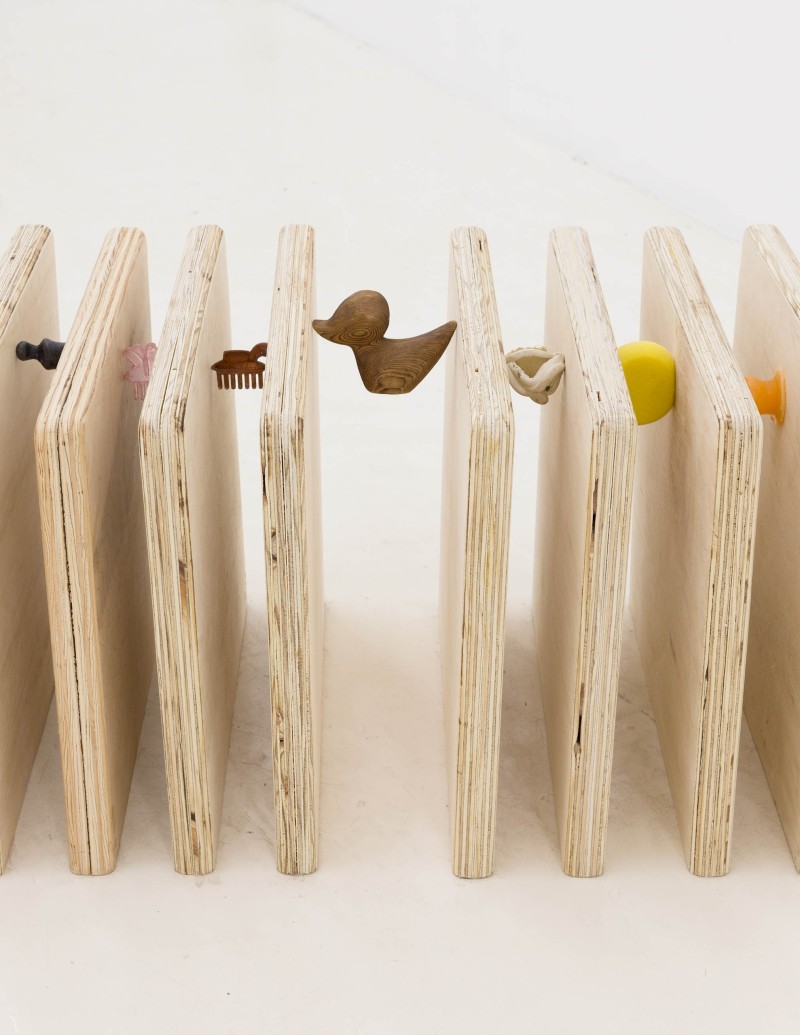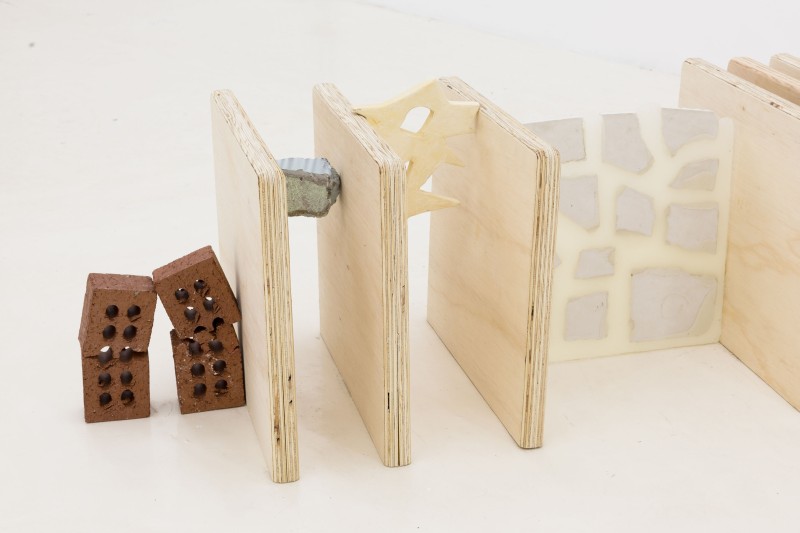01102020
01102020
January 10 – February 16, 2020
Fisher Parrish Gallery
238 Wilson Avenue, Brooklyn, NY 11237
Fisher Parrish Gallery is pleased to present 01102020 curated by Y2K group featuring works by Doris Guo, Linnea Kniaz, Kricket Lane, Cole Lu, and Rose Marcus.
“Or - as Lacan put it - without a blind spot in the field of vision, without this elusive point from which the object returns the gaze, we no longer ‘see something’; the field of vision is reduced to a flat surface, and ‘reality’ itself is perceived as a visual hallucination.”1
Y2K group brings together these five sculptors under little pretense – instead of a theme to be applied to the artists artificially, the exhibition is organized around the artists, their work, and the curator’s memories and experiences visiting, meeting, and knowing each artist in various degrees. Each artist’s work exists in a peripheral field within the gallery space in which the artworks are experiential – interacting with both the space of the gallery and the viewer. In order to describe the show, the concept acts more like an identifier and not a singular idea holding everything together. The main idea and question is, how does the viewer interact with the artworks, with the space where the artworks are installed, and how do the artworks interact with each other? Each experience will differ based on how the exhibition is approached and based on the individual viewer’s observation and perception of what is in front of them. This is the intended way to experience the exhibition—to interact by physically being there to observe. Documentation will give a glimpse into the exhibition through images, but this will be only one perspective, which is that of the photographer. Since exhibition titles are another method used to label or define a traditional group show, the title references simply the opening date: 01102020.
01102020 is based on one’s perception of our collective reality and loosely based around the simulation argument. In its minimal display of objects and installation it asks the viewer if what we are seeing is real or simulated, how we perceive the empty space in front of our eyes, and how we should interact within this reality. Below are notes and thoughts that help to describe if and how we are in a simulation...
1 Slavoj Žižek, The Plague of Fantasies, London/New York: Verso, 2008, p. 171.
“(1) The fraction of human-level civilizations that reach a posthuman stage is very close to zero; (2) The fraction of posthuman civilizations that are interested in running ancestor-simulations is very close to zero; (3) The fraction of all people with our kind of experiences that are living in a simulation is very close to one. If (3) is true, then we almost certainly live in a simulation.”2 These are the three reasons from Nick Bostrom, written in 2003, that postulated if we are living in a simulation or not. Number 1 suggests that once a human-level civilization becomes advanced enough to be considered posthuman, they would not last and become extinct either through their own advancements or an outside force. Number 2 suggests that if there are posthuman beings with the capabilities of creating a simulation then they would not be interested or they would feel indifferent to creating a simulation. One reason to create a simulation in the first place could be to study and watch how a group of figures, possibly a civilization, could advance technologically, if ever, and maybe to see how a civilization would solve problems. Number 3 suggests that we are already in a simulation.
The Matrix, released on March 31, 1999, is considered the greatest sci-film ever made. The storyline describes people who live in the matrix, which is a computer simulation created by Artificially Intelligent machines for an energy source or to turn humans into batteries. The simulation is near-perfect as the people inside can’t distinguish between the simulated everyday world and what is actually their reality (floating in a body-sized liquid tube with plugs inserted among endless fields of other humans). The year in the real world outside of the matrix is supposedly 2166 and not 1999, which is what is thought to be the current calendar year in the movie. Neo is saved from the matrix and later becomes The One who is able to change anything inside the matrix as he sees fit and is prophesied to free the humans from the matrix.
Instead of machines, there could be some posthuman advanced beings that may have created our own matrix or what we think reality is. “Simulating the entire universe down to the quantum level is obviously infeasible, unless a radically new physics is discovered. But in order to get a realistic simulation of human experience, much less is needed - only whatever is required to ensure that the simulated humans, interacting in normal human ways with their simulated environment, don’t notice any irregularities.” 3 This can be explained more on a quantum physics level, but an advanced being that creates a simulation or even a programmer who creates a video game won’t have to create every single microscopic detail of the world. They would only have to create a world or a space that is believable enough to pass as a 3D interactive world.
This is similar to the way older PC computer games were made, where the graphics had to load up and buffer each time a new room or a new scene was observed or interacted with by the viewer or the player inside the game. Since everything doesn’t have to be accounted for, only the bare minimum to simulate an environment or space, the amount of energy to create the simulation is more calculative than impossible to fathom.
“In order to create a virtual reality that is indistinguishable from physical reality...we would need to develop mind-interfacing technology that consist of several parts:
The tech would need to broadcast a virtual world into the brain.
The tech would need to take our response(s) to the world around us—including our movement, feelings and interaction—and transmit those actions into the virtual world.
The tech would also need to plant a reasonable history of what happened “before” any point in the simulation.”4 ...It turns out that the best explanation for what collapses the probability wave is the process of observation. It is as if we need to have someone looking at the thing to determine what the
2 Nick Bostrom, “Are You Living in a Computer Simulation?” Philosophical Quarterly (2003) Vol. 53, No. 211, pp.243-255. 3 Nick Bostrom, “Are You Living in a Computer Simulation?” Philosophical Quarterly (2003) Vol. 53, No. 211, pp.243-255. 4 Rizwan Virk, The Simulation Hypothesis, Bayview Books LLC, 2019, p. 74.
thing is, otherwise the thing is really just a mass of floating possibilities... This means that the observer, who is a conscious entity, is participating in the outcome of the results of physical phenomena, at least at the subatomic level. 5
5 Rizwan Virk, The Simulation Hypothesis, Bayview Books LLC, 2019, p. 131. 6 Kevin Kelly, The Inevitable, New York: Penguin Books, 2017, pp. 252-253.
Particles on a subatomic level can not only be fixed when making up matter, like a cup, but can also be in a constant state of flux. This means that when we observe a cup on a table, it looks to be there in existence in front of us but on a subatomic level the matter making up the cup on a table with water inside can be any possibility existing all at once. The singular reality is created when one observes what is in front of them. The act of observing creates the cup, the table, and the water inside the cup. Therefore what is in front of ones eyes is what you see, but when you look away, it can be an infinity of possibilities. This holds true for any viewer as they observe the world in their own way simultaneously.
“In the coming decades we’ll keep expanding what we interact with. The expansion follows three thrusts.
1. More senses
We will keep adding new sensors and senses to the things we make. Of course, everything will get eyes (vision is almost free), and hearing, but one by one we can add superhuman senses such as GPS location sensing, heat detection, X-ray vision, diverse molecule sensitivity, or smell. These permit our creating to respond to us, to interact with us, and to adapt themselves to our uses. Interactivity, by definition, is two-way, so this sensing elevates our interactions with technology.
2. More intimacy
The zone of interaction will continue to march closer to us. Technology will get closer to us than a watch and pocket phone. Interacting will be more intimate. It will always be on, everywhere. Intimate technology is a wide-open frontier. We think technology has saturated our private spaces, but we will look back in 20 years and realize it was still far away in 2016.
3. More immersion
Maximum interaction demands that we leap into the technology itself. That’s what VR allows us to do. Computation so close that we are inside it. From within a technologically created world, we interact with each other in new ways (virtual reality) or interact with the physical world in a new way (augmented reality). Technology becomes a second skin.”6
Doris Guo works in Queens. She received her BFA from Pratt Institute. Her recent solo exhibitions include: 9PM Til I, Eclair (Berlin); XO, Bodgea (New York); Coffee & Tea, Princess (New York); Joss, Real Fine Arts (Brooklyn). Recent and past group exhibitions include: Cruise Kidman Kubrick, Galerie Maria Bernheim (Zurich); note: standing prop, Manila Institute (New York); Pastoral (Grind and Drone), 47 Canal (New York); The Parisian Nights, Crèvecœur Paris); Mad child of a wise mother, CACMB (Paris); The Fates, Interstate Projects (Brooklyn).
Linnea Kniaz lives and works in Brooklyn. She received her MFA from California Institute of the Arts. Recent solo and two-person exhibitions include: Running Bond, Magenta Plains, (New York); Jackie Winsor, Linnea Kniaz, Paula Cooper Gallery (New York); Between the Window and the Pipe, Y2K group (Brooklyn), A Noiseless Patient Spider, VACANCY (Los Angeles). Recent and past group exhibitions include: “and I’ll have a pepper-shaker in my cave, so laugh”, LTD (Los Angeles); mushrooms, Y2K group off-site (New York); Frame Structures, Magenta Plains (New York); seafood stew, Y2K group off- site (Maspeth); Binder #2, organized by Emily Ludwig Shaffer for In Response: The Arcades, The Jewissh Museum (New York); Shifting Subjecthoods, curated by Jenni Crain, Torrance Shipman Gallery (Brooklyn).
Kricket Lane lives and works in Hudson, NY. She received her BFA from Smith College. Her recent solo exhibition includes: Prepositions All the Way Down, Lubov (New York). Past group exhibitions include: Marketplace, 321 Gallery (Brooklyn); In the Works, Unisex Salon (Brooklyn); Sense-Data, RK Projects @ Shoot The Lobster (New York).
Cole Lu works in Brooklyn. Lu received a MFA from Washington University in St. Louis. Recent solo exhibitions include: The Dust Enforcer (All These Darlings Said It’s the End and Now US), Deli Gallery (Brooklyn); The Third Lie, Syndicate, Poppositions 2019 (Brussels); Augusta Prima, 77 Mulberry (New York); Animal Fancy, Monaco (St. Louis). Recent and past group exhibitions include: Laraium, Deli Gallery (Brooklyn); note: standing prop, Manila Institute (New York); Ambient Commons, 77 Mulberry (New York); OVC, organized by Meg Onli and Lauren Downing, Institute of Contemporary Art (Philadelphia)
Rose Marcus lives and works in New York. She received a MA from Hunter College. Her recent solo exhibitions include: FRONT, Night Gallery (Los Angeles), Core, Mary Mary (Glasgow); The Four Seasons, Night Gallery (Los Angeles). Recent and past group exhibitions include: Leavee, Parisian Laundry (Montreal); Devotion: How Sitting on the Floor at the Store Reminded Me Weaknesses Show Strength, Kimberly-Klark (Queens); Condo New York, Mitchell Algus Gallery (New York); Metropolis, Simon Lee Gallery (New York); In The Abstract, curated by Susan Cross, MASS MoCA (North Adams, MA); The Gap Between the Fridge and the Cooker, The Modern Institute (Glasgow); Daydream from 2013, curated by Matthew Flaherty, CANADA (New York)
